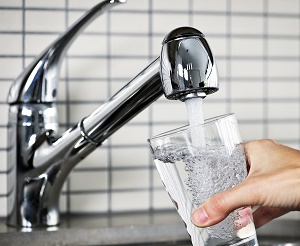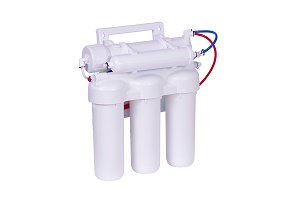Is Tap Water Safe to Drink In Arizona?
Date: February 23, 2017
ARTICLES
IS TAP WATER SAFE TO DRINK IN ARIZONA?
FEB 22, 2017
In the Arizona desert, and with the hot summer months rapidly approaching, now is a better time than ever to inform yourself about what may be in your Phoenix drinking water. And while there are certainly some substances that should raise your eyebrow, you should also be suspicious of taking on face value some of the inflammatory headlines that have been written in recent months. (Sensationalism gets click, you know?)
Here is a general breakdown of the important points you should know, both in terms of causes for concern in regards to Phoenix tap water and reasons to not lose any sleep about the quality of your drinking water.
ABOUT PHOENIX TAP WATER
THE BAD NEWS ABOUT PHOENIX TAP WATER
Chromium 6 is a naturally occurring chemical that is also produced in large quantities by certain industrial applications. Exposure to the chemical can cause skin burns, pneumonia and certain cancers. If it sounds familiar, it is probably because it is the chemical at the center of the legal battle famously fought by Erin Brockovich.
A nonprofit research organization, the Environmental Working Group, released a report last year that showed that Phoenix tap water had exceptional levels of the contaminant in its drinking water. Among all major U.S. cities, Phoenix drinking water had “by far the highest average level” of chromium 6 present.
THE GOOD NEWS
While having such a relatively large amount of chromium 6 present in Phoenix tap water may sound incredibly scary on face value, it is important to approach this fact with some more context. The good news, if there can ever be any good news when it comes to contaminants in drinking water, is that because of some mitigating factors, you can feel perfectly comfortable using and drinking Phoenix tap water by taking some extremely reasonable precautions to decontaminate your water.
First, the highest levels of chromium 6 are found within groundwater, as opposed to surface water. The city of Phoenix’s tap water is primarily made up of the latter, with a whopping 98 percent surface water being rounded out by a mere 2 percent of ground water.
Second, the Environmental Protection Agency has stringent standards and Phoenix drinking water consistently exceeds those standards for health and safety. Furthermore, Phoenix drinking water is tested more than five million times per year to ensure its continued safety for human consumption (though it is important to note that while the state of California does have a set maximum for the amount of chromium 6 that can be present in drinking water, the federal government does not have any such standard). While the Environmental Working Group’s report claims that a huge majority of cities tested had amounts of the substance in excess of California’s standard found in their drinking water, the Environment Protection Agency only found the substance in 2 percent of the sample it tested.
Third, it is incredibly easy to be proactive and take steps at home to making your drinking water even safer for you and your family.
REASONABLE PRECAUTIONS
Reverse osmosis filtration systems are a simple and cost-effective solution to ensure the quality of your Phoenix drinking water. Reverse osmosis is considered the gold standard of filtered water and is the same method bottled water companies use for their products.
As an added benefit, the filtration system will also help to eliminate all of the issues associated with hard water as well as that unpleasant chlorine taste. While not causing the same alarm as chromium 6 and other contaminants, the calcium, magnesium and other minerals that contribute to hard water can be a nuisance because of the havoc it wreaks on fixtures and the way it interferes with soaps and detergents. And while chlorine is an important additive for preventing bacteria in public water sources, it does not smell or taste very good.
A reverse osmosis filtration system contains three cylindrical canisters. One is a membrane and two are carbon filters. Tap water first goes through one of the carbon filters. This step is to remove any large sediment that can clog or interfere with the membrane. Then the membrane, which is made of plastic, works to remove anything the carbon filter might have missed. This is all before the water is finally passed through the other carbon filter for good measure and then directly to your tap.
If you are interested in improving the quality of your drinking water, contact us today. You can give us a call at 602-787-3956 or fill out our online form! With a new reverse osmosis filtration system, you can count on safe, refreshing and delicious water to drink all summer long.


